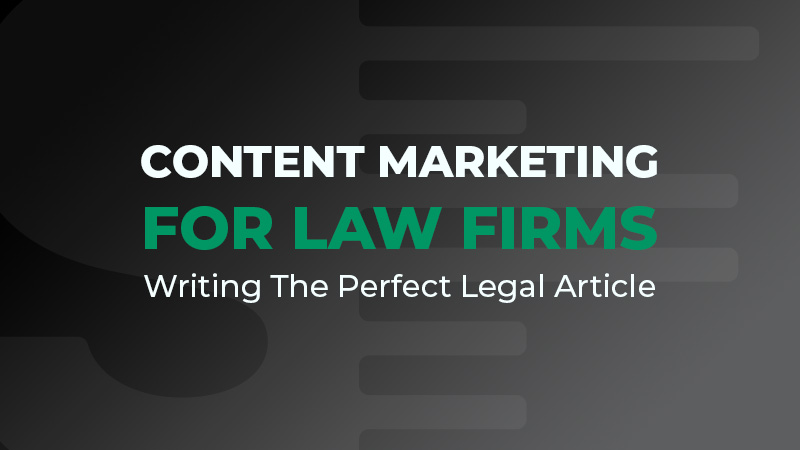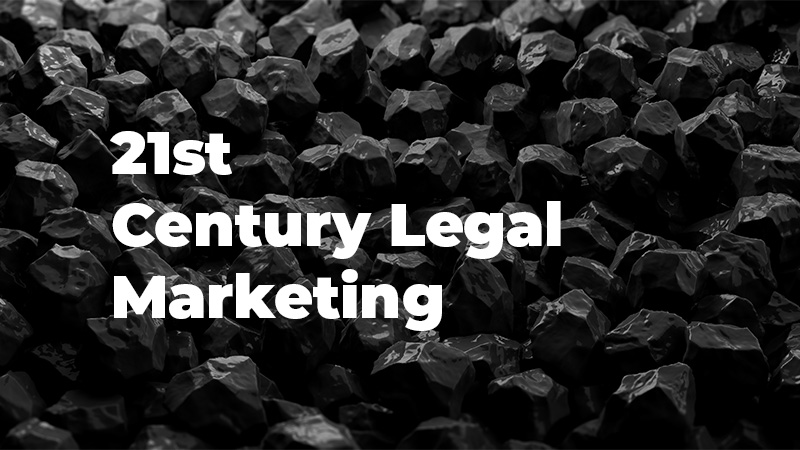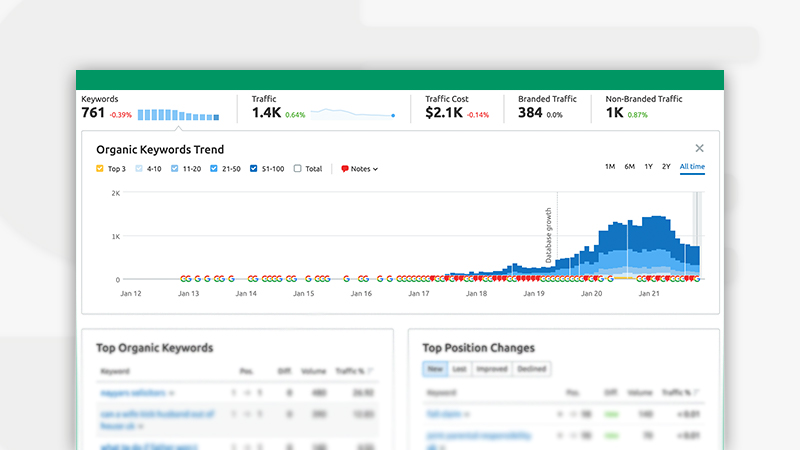What seems like centuries ago, we would use a phone directory to find and contact our local solicitors. Nowadays, this just isn’t enough, as the first thing we do when we want to find out any information is to ‘Google it’.
Having an office space for solicitors doesn’t cut it anymore, which is why they’ve got to keep up to speed with the world of technology with a website that represents them effectively.
As such, we’ve decided to write this blog on the importance of website design for solicitors in particular. An easy-to-use site with a strong, unique personality can set you apart from your competitors if it’s done correctly.
Let us take you through why website design is such an essential component for any law firm.
The First Impression

As we mentioned earlier, your website is likely to be the first interaction a potential client has with your firm. Therefore, this is going to be the dealbreaker as to whether they’re going to consider you as a company they’d like to work with.
Essentially, creating a positive first impression should be the number one mission of your website as a law firm. You want to ensure that your users trust the site, as well as the content you have produced. This way, it’ll be more likely they will choose you over your competitors.
Without having the appropriate components of smooth website design, you can’t expect your users to feel as though they want to use you as their trusted source of legal advice and information.
Intuitive Navigation

What we mean by intuitive navigation in terms of a law firm’s site is that a user would be able to get to the information they need as simply as possible. Essentially, it’s the process of website traffic being able to navigate through your website seamlessly from page to page, digesting the information they need, and ignoring the information which they don’t.
The most important thing to take away from intuitive navigation is to consider how long it takes for your users (A.K.A., your potential clients) to find the pieces of information they’re looking for.
Ask yourself how long would it take your site users to find the information regarding:
- Who your solicitors are and what they specialise in
- The services you offer
- Your contact information
- Case studies
- Elements which are likely to reinforce your credibility and authority such as client reviews etc.
Realistically, it should be fairly easy to access any of these pages with just a few clicks on your navigation bar or website menu.
Website Speed and Responsive Design

In this fast-paced environment, we will not tolerate a website if it doesn’t load within two seconds, so having your website up to speed an essential part of your business.
Simple ways that you can keep your website speed up to scratch is by dividing up your pages, ensuring that your featured images and videos are compressed, and using a reliable web host.
As far as responsive design goes, this is an essential element for a law firm. Use-patterns are increasingly edging towards mobile as they have already surpassed desktop traffic. This means that any websites that aren’t mobile-friendly are seriously going to miss out.
Think about the number of people that commute or travel for work alone — many hours are spent searching and scrolling on smart devices, so it’s essential that your website is as responsive as it possibly can be. Unless there’s an extremely nosey person sitting next to you on the train, you can guarantee people will use this time to search for their legal queries.
Additionally, you want to ensure that your site is working on all major devices as well as all search browsers.
It’s important to note that all mobile responsive sites should have almost as much information as the desktop site. You can cut out images and videos that you won’t really need on mobile devices, just to speed up the loading time as much as possible. Also, make sure that all of the text is easy to read and aligned correctly as this will have a huge impact on whether users will give you the time of day.
Consider Microsites
If you’ve not heard of a microsite, it’s a single web page or a small compilation of pages which are designed to stand alone outside of your law firm’s main website.
A microsite is able to exist on a URL under your main domain, subdomain or a completely different domain. However, they’re usually uniquely designed and have their own navigation system.
So how can they work for a law firm you might ask? Well, for a law firm, a microsite will be more than what’s known as a ‘landing page’, but less than a full-on website. They will allow your company to generate more leads as you’ll be providing highly targeted content that fits your audience’s needs. Just some food for thought.
CTAs and Submission Forms

A call-to-action (CTA) is a great way for law firms to direct interested visitors towards the correct point of contact and this is the first step to converting traffic into new clients.
When you have a longer page with more information on your website, think about repeating your CTA. Doing this will make sure it stands out alongside the rest of your content, and it should reduce the amount of readers who are reading the content without following through. You don’t want to leave any room for a user to become confused as to where they should go.
A submission form is an alternative to the CTA button which enables your users to establish contact without needing to directly ring or email you. This way, it’s left up to you as a company to follow up on these potential clients and close a deal.
It’s important not to get too carried away — only ask a potential client for the essential information. You must keep it easy for them to fill out the form quickly and aim to maintain their trust by avoiding demands for thousands of details. Name, email, number and a brief outline as to why they’re looking to contact you will suffice.
Headlines and Content

As you’ll be aware, there are many areas of the law, so visitors coming to your site need to be notified of what you have to offer via your headlines. From doing this, you’re granting your site visitors the most important piece of information they need as soon as possible.
Once they visit your site, your users should have some sort of idea of whether you’re a good fit for what they need, and essentially, this should make them more eager to keep reading and progress to a point of contact.
We recommend thinking about these two points when it comes to your headlines and content:
1) Clarity: You’ve got to be clear to your potential clients so they know exactly what you have to offer.
2) Your Unique Value Proposition: What makes you different from your competitors? How can you get this message across to your potential clients? However you do it, it’s got to be absolutely transparent.
Your Firm’s Achievements

If your law firm has been successful in gaining any relevant achievements, then of course, you want your site visitors to know about this. In turn, it should work as one of your most valuable marketing tools.
We know word of mouth is great, but highlighting your success in black and white in its own section on your website will add brand authority to your site.
The Visuals
High-quality visual elements are going to help to add a little jazziness to your law firm’s website, as you’ll draw in visitors by getting their attention.
Examples of visuals might be:
Images: You should only use the best quality images as anything less than this is going to reflect poorly on your company. This goes for anything visual including photos, videos and logos. Using real photographs to humanise your law firm and allow your potential clients to put a face to a name is likely to work in your favour.
Videos/slideshows: Any moving images are a great way to grab attention. The hard part is making a decision on what can be featured in a video format that is suitable to your law firm.
Social Media Profiles

This might not be such an obvious one, but having small icons on each page of your website is a constant reminder that you are (or should be) using social media.
Now, I know what you’re thinking. Social media for solicitors, what on earth! Well, let us tell you, social media can be a really useful way to connect with a wider audience and promote their business to an audience that they may not be able to reach otherwise.
However, you wouldn’t need to plaster this all over your website, that would most definitely work against you. It’s just a way of letting your potential clients know that you are living in the 21st century, and go out of your way to deliver useful content via your social profiles on a regular basis.
Our Answer: Pretty Important, folks!

We could have really gone to town with what elements a law firm would actually need to consider in order to have outstanding website design, but that’s for another time.
However, we have highlighted individual components of a website, and why they are particularly important for solicitors.
As we’ve mentioned, a website is the new storefront of your company and your brand. In order for people to make the decision to approach you for legal assistance, you need to gain their trust.
The best and simplest way to do this is to make your website easy to navigate and have appropriate tools in place which will encourage a website user into making an enquiry or giving out their details. We’ve seen first hand how a large law firm with many departments can result in a nightmare of a website.
Having a straight forward, logical layout, and even the consideration of using microsites will set you on the right path to achieving legal website excellence.
If you’re a law firm who believes that you could be doing more to attract potential clients, then please get in touch with Strawberry Forge today to find out how we can help you to achieve your goals.







